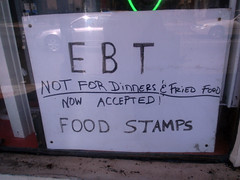 The Globe and Mail has published an interview with two University of Toronto sociologists who have written a new book on “foodies.” According to the article:
The Globe and Mail has published an interview with two University of Toronto sociologists who have written a new book on “foodies.” According to the article:
As the authors explain in their new book Foodies: Democracy and Distinction in the Gourmet Foodscape, for which they interviewed 30 people and analyzed hundreds of articles, today’s foodies might find classic French haute cuisine stuffy. They may be willing to try goat testicles and sheep brains. And they’ll happily visit the city’s best hole-in-the-wall eateries, no matter how dumpy the decor. But one thing foodies flat-out refuse to eat is dinner at a mundane, generic chain restaurant.
Sociologists Josée Johnston and Shyon Baumann argue that being a foodie isn’t just about consuming good food, it’s also about garnering cultural capital. Says Johnston:
A lot of elements of foodie culture are still relatively exclusive, and part of what foodie culture is about is dabbling in all sorts of different ethnic cuisines and food traditions. What makes that a kind of privilege is to have the kind of knowledge to go to all of these kinds of places [whether it’s a fancy restaurant or hole-in-the-wall eatery], so you’re not just familiar with one type of ethnic cuisine, you’re familiar with the whole range of them. And that can end up constituting a kind of cultural capital people use to display their sophistication.
However, this may entail ignoring inequalities. Says Baumann:
…if you’re going to be a foodie and value authentic and exotic cuisine, it’s going to lead you to places of poverty, to contexts of impoverished food production and consumption. Through romanticizing those conditions of poverty, you can get the good food without having to dwell on the uncomfortable fact of poverty.
The authors also noticed gender differences among foodies:
Johnston: One thing that was surprising to me was the different ways that men and women embody their foodie culture. Men often emphasize their expertise more, and they’re often much more interested in the exoticism, especially eating things that are wildly unconventional, like goat testicles. And women didn’t do that as much. They talked more about how their interest in food was also about protecting the health of their family.







 A recent
A recent 